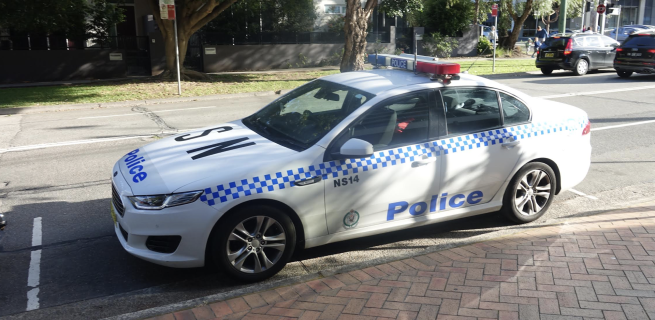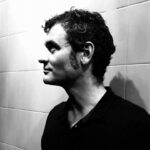Seven teenagers were charged with offences ranging from car theft to police pursuit early on Monday, as NSW police attempted to stop three vehicles close to the NSW town of Woy Woy at 2.30 am, as these were suspected to be reportedly stolen from suburbs around the Central Coast.
One vehicle, a BMW, rammed into a police car, prior to its two occupants being arrested, while a Mercedes took off in the direction of Sydney, reaching speeds of up to 160 kilometres as it did, and the 17-year-old driver came to a stop in the Sydney suburb of Toongabbie at 4 am.
The offenders, six males and one female, were between 15 and 17. The driver of the Mercedes that made its way to the Greater Sydney region has been charged with a truckload of offences, including police pursuit, which involves continuing to attempt to evade police after they commence chase.
The police terminated the pursuit “a short time later due to the manner of driving”, which sounds like the NSW Police Force has a policy that dissuades pursuits.
But the truth is that while civilians are criminalised for taking part in pursuits, when it comes to police, it’s almost carte blanche.
And the latest police statistics reveal that over the eight years to June 2023, NSW police pursuits increased by 71 percent. This translated to up from 2,195 in 2015-16 to 3,762 police pursuits over the financial year 2022-23, and of those only 31 percent, or 1,192 chases were terminated early.
Police pursuits rising
The NSW Police Force Annual Report 2022-23 outlines that 203 of the pursuits that weren’t aborted, or close to 8 percent of them, resulted in collision, whilst 72 injuries resulted from the overall pursuits, and six people were killed as a result of a police high-speed chase over those 12 months.
Three hundred and ninety-eight police chases were undertaken for criminal reasons, or 10 percent of the total, while the vast majority, 1,817 pursuits or 48 percent, were for traffic matters, which means there are high-speed chases initiated over less serious matters that don’t warrant them.
An example of how this can play out was seen when NSW police officer Harry Little slammed into 68-year-old Gai Viera’s car in September 2019, leaving her in a coma and with livelong injuries, as he was attempting to pursue a Volkswagen containing a driver believed to be using their mobile phone.
Pursuits for stolen vehicles, 966, and those that involve not stopping for a random breath test, 940, aren’t categorised as criminal or traffic matters, and its questionable whether chasing potential drunk drivers at high speed or trying to secure stolen cars is worth endangering lives.
Redfern Legal Centre senior lawyer Samantha Lee told Sydney Criminal Lawyers in 2018, when this issue was receiving heighted attention after the Viera accident, that “the continued reliance on lethal pursuits by NSW police is both unjustified and out-of-step with best practice”.
Police pursuit (Skye’s Law)
Both civilian and law enforcement participation in pursuits has been a recurring issue for NSW parliament for more than a decade, yet while legislators have enacted new laws to prevent dangers caused by civilians trying to evade police, they’ve done little to curb police officers’ need for speed.
Section 51B of the Crimes Act 1900 (NSW) contains the offence of police pursuit, and it involves a person “who knows, ought reasonably to know or has reasonable grounds to suspect” that police are in pursuit, not stopping, but rather driving “recklessly or at a speed” or in a dangerous manner.
This crime can see a first-time offender sentenced to up to 3 years prison time, or a second or subsequent offender being sentenced to up to 5 years in gaol.
The offence of police pursuit is also known as Skye’s law, as it’s named after 19-month-old Skye Sassine, who was killed when William Ngati, who was fleeing a police pursuit, crashed into the back of her parents’ car, killing her on New Year’s Eve, 2009.
Skye’s Law was enacted the following March, under the Crimes Amendment (Police Pursuits) Bill 2010.
However, when the coronial findings were finally handed down in 2015, NSW deputy state coroner Paul MacMahon was scathing about the actions of officers involved in the pursuit.
The coroner outlined “there was no evidence to suggest that the action of the police officers directly caused the collision that resulted in Skye’s death”, but they’d shown “utter disregard” for the elusive NSW Police Safe Driving Policy.
Our private policy
NSW police is very protective over its Safe Driving Policy, which is supposed to have been undergoing review since at least 2014, when the coronial inquiry into the police pursuit death of Hamish Raj called for an overhaul, which it appears to be continuing right now, with no end in sight.
Then NSW deputy state coroner Hugh Dillion found the death of 21-year-old Raj, who was riding a motorbike, was likely preventable, and he called for the updating of pursuit policy, recommending that in urban settings, there’s a two-minute pursuit limit, while in rural, the limit should be five.
But to give some idea of how NSW police consider this decade-long reforming pursuit policy project, former police commissioner Mick Fuller said in the wake of the Veira accident, that police pursuits could be banned but that would come at a cost, as “there’s a price to pay for public safety”.
Tasmania banned high-speed pursuits for minor offences in 1999, which has resulted in a steep decline in deaths and injury. Queensland followed suit in 2012, while in 2015, Victoria police updated its policy, so that officers can only chase a vehicle under exceptional circumstances.
Following the chase that ended in Skye’s death, attempts were made to obtain the Safe Driving Policy, but this was refused. And when a copy was obtained the following year, due to its heavy redacting, it only revealed one of the nine reasons that allow officers to disengage from pursuits.
The likely police pursuit death of Dunghutti teen Jai Kalani Wright in February 2022, led the Redfern Legal Centre to again call on the NSW Police Force to release its Safe Driving Policy, which Lee described as being “shrouded in secrecy”. Yet, unsurprisingly, no release was forthcoming.
NSW state coroner Teresa O’Sullivan cut the Jai Wright inquest short last month and referred the matter to the NSW Director of Public Prosecutions to consider charges, after footage revealed an officer swinging an unmarked vehicle out in front of the trail bike the 16-year-old boy was riding.
But let’s face it, with the number of NSW police pursuits steadily increasing and the reform of the pursuit policy going on a decade now, no one is holding their breath on release of the details of the Safe Driving Policy or on an actual overhaul of police chase protocol.












Feed up of our court room proceedings. Kids steal bikes, cars, go way over speed limit & are often on bail. Throw the book at them. Hope my taxes aren’t paying for Redfern Legal Services. The kids don’t care if they hurt/ kill someone but the police are always blamed. Maybe parents of kids need to be charged for not controlling their kids.